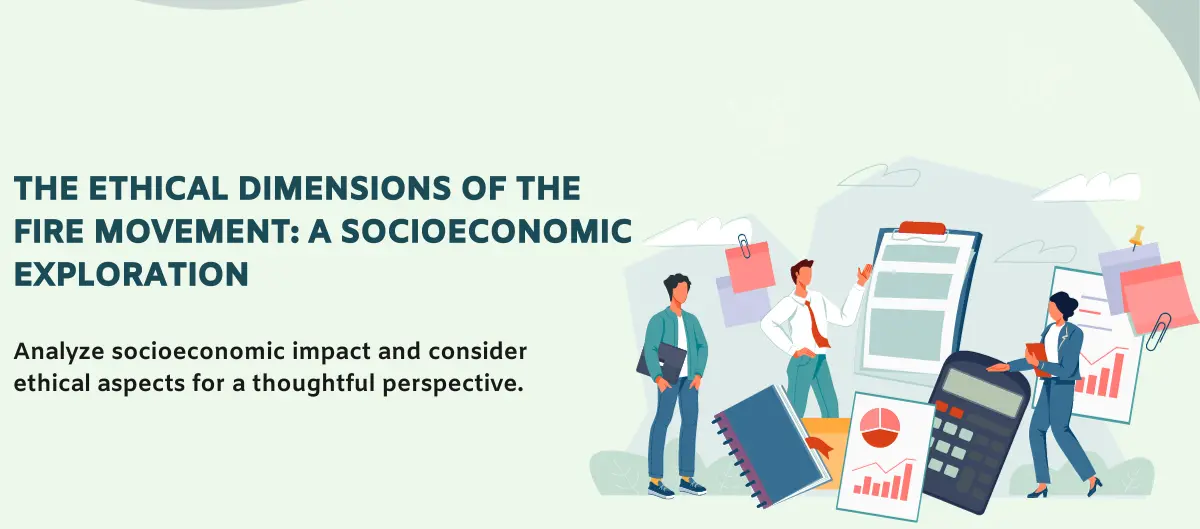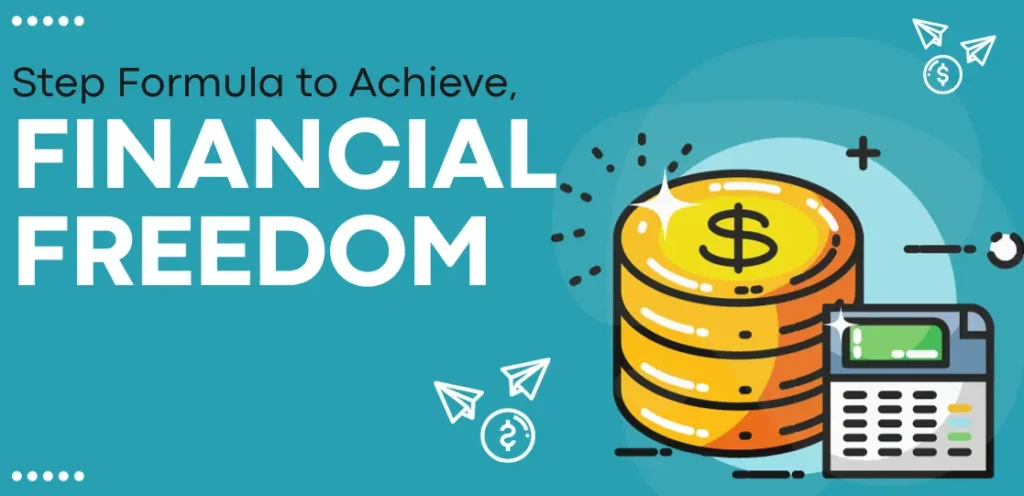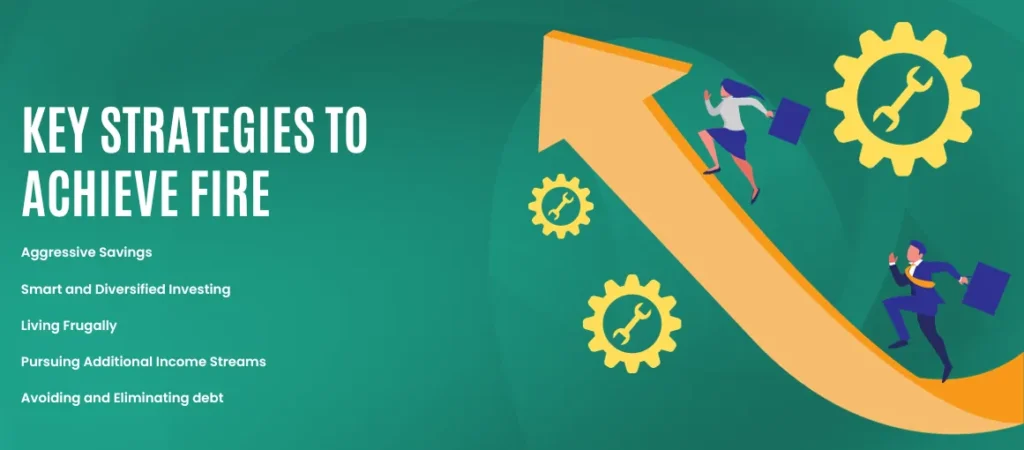
The Ethical Dimensions of the FIRE Movement: A Socioeconomic Exploration
Personal Finance
- John Quarrie
- October 1, 2023
In a world where the narrative has often been about climbing corporate ladders and working until the ripe age of 65, a counter-movement has been gaining momentum, challenging these conventional norms. Enter the FIRE Movement – an acronym for “Financial Independence, Retire Early.” At its core, the FIRE Movement is not just about stepping away from the workplace earlier than most. Still, it’s about reshaping our understanding of financial freedom and the essence of leading a fulfilling life. Rooted in principles of frugality, intentional living, and savvy investing, FIRE prompts individuals to envision a life where they are not chained to a desk but are free to pursue their passions, travel, volunteer, or enjoy the art of slow living.
As the movement continues gaining traction, it beckons a vital question for many: Is it possible to rewrite the rules of personal finance and retirement to prioritize living over merely existing? This exploration will delve deep into the principles, strategies, and stories behind the FIRE Movement, unravelling the allure and practicality of achieving financial independence and choosing early retirement.
Understanding the FIRE Movement: A Deep Dive into Financial Freedom
1. The Principles Behind FIRE:
The FIRE movement, which stands for “Financial Independence, Retire Early,” is not just about retiring ahead of the traditional age or accumulating wealth. It’s a philosophy anchored in principles allowing individuals to live on their terms. Here are the core principles that define the FIRE movement:

a. Financial Independence Over Early Retirement:
- The primary goal of the FIRE movement is to achieve financial independence, which means having enough savings and investments to cover your living expenses without relying on a regular paycheck.
- Early retirement is a byproduct of financial independence, but only some who achieve financial independence choose to retire early. Some continue to work on passion projects or part-time engagements.
b. Living Below Your Means:
- A cornerstone of the FIRE movement is emphasizing frugality and living below one’s means. This often involves cutting unnecessary expenses, downsizing, and prioritizing savings and investments.
- It’s not about depriving oneself but about making intentional choices on spending, valuing experiences over material possessions, and understanding the difference between wants and needs.
c. Maximizing Savings Rate:
- FIRE adherents often target aggressive savings rates, sometimes saving 50% or more of their incomes. This accelerates the journey to financial independence.
- The idea is to increase the income gap by boosting income (side hustles, investments) or reducing expenses.
d. Investing Wisely:
- Achieving financial independence requires more than saving money; it involves investing those savings to create passive income streams.
- Common investment vehicles include stock markets, real estate, and bonds. The goal is to create a portfolio that provides a steady return, outpaces inflation, and supports one’s desired lifestyle.
e. Flexibility and Adaptability:
- The journey to FIRE is unique for everyone, and there’s no one-size-fits-all approach. Adherents must adjust their strategies flexibly based on personal circumstances, market conditions, and life events.
- This might mean recalibrating investment strategies, adjusting spending habits, or even redefining what financial independence means to an individual.
f. Continuous Learning and Education:
- The financial world is complex, and those pursuing FIRE often prioritize self-education. This can involve reading financial books, attending seminars, joining online communities, and seeking mentorship.
- Being informed enables better decision-making and updates one on strategies, risks, and opportunities.
g. Redefining Success:
- At its core, the FIRE movement challenges societal norms about success, wealth, and retirement.
- It encourages individuals to define success on their terms, focusing on freedom, quality of life, and personal fulfilment.
2. Key Strategies to Achieve FIRE:
Achieving the dream of Financial Independence and Early Retirement (FIRE) might seem daunting to some, but it becomes an attainable goal with a systematic approach and adherence to key strategies. Here are the foundational strategies that proponents of the FIRE movement emphasize:

a. Aggressive Savings:
One of the hallmarks of the FIRE approach is saving a significant portion of one’s income, often ranging between 50% to 70%. This demands lifestyle adjustments, prioritizing needs over wants, and continually finding ways to boost one’s savings rate.
b. Smart and Diversified Investing:
Simply saving is not enough. The real growth comes from wisely investing those savings. Common investment channels include the stock market, real estate, and bonds. Diversification is crucial. Spreading investments across different asset classes minimizes risk and allows for consistent growth.
c. Living Frugally:
Embracing a frugal lifestyle doesn’t mean living without joy or comfort. It means making conscious spending decisions, valuing experiences over material possessions, and eliminating unnecessary expenses. This might involve downsizing one’s home, opting for used items instead of new ones, or cooking at home more often than dining out.
d. Pursuing Additional Income Streams:
While cutting expenses is vital, increasing income accelerates the journey to FIRE. This could be through side hustles, freelance work, or investing in assets that generate passive income, like rental properties or dividend-paying stocks.
e. Avoiding and Eliminating debt:
High-interest debt, especially from credit cards, can severely impede financial growth. A vital strategy is to pay off debts quickly and avoid accumulating new ones. This might mean prioritizing debt repayment over certain investments in the short term.
f. Continuous Financial Education:
The financial landscape is ever-evolving. Staying informed about market trends, investment opportunities, and potential risks is crucial. This requires regular reading, attending seminars, or joining financial communities where ideas and strategies are shared.
g. Setting Clear Goals and Monitoring Progress:
It’s essential to have clear, measurable goals related to savings rates, investment returns, or income generation. Regularly reviewing and tracking progress ensures you’re on the right path and allows for timely adjustments.
h. Embracing minimalism:
Beyond just frugality, minimalism emphasizes owning and consuming only what adds value to one’s life. This philosophy aligns well with FIRE, helping adherents reduce expenses and focus on experiences and relationships over possessions.
i. Planning for Healthcare and Emergencies:
Achieving FIRE often means losing employer-provided benefits like health insurance. Planning for healthcare costs and having an emergency fund ensures that unexpected expenses don’t derail the FIRE journey. The path to FIRE combines disciplined savings, wise investing, and intentional living. It’s a holistic approach that involves both the mind and the wallet, focusing on long-term freedom and fulfilment over short-term pleasures.
3. The Pros and Cons of the FIRE Movement:
While increasingly popular, the FIRE (Financial Independence, Retire Early) Movement has its share of debates and discussions. Advocates claim it’s a revolutionary approach to personal finance and life fulfilment, while skeptics point out potential pitfalls. Let’s evaluate both the benefits and challenges associated with this approach.
Pros of the FIRE Movement:
- Personal Freedom: The primary allure of FIRE is the freedom it provides. Achieving financial independence means not being tethered to a job out of necessity, allowing individuals to pursue passions and hobbies or enjoy life on their terms.
- Early Stress Reduction: Financial worries are among the top stressors for many. Achieving financial independence early can reduce or eliminate these concerns, improving mental well-being.
- Empowerment and Control: The FIRE journey involves proactive financial management, instilling a sense of control over one’s financial destiny. This can be empowering, fostering confidence and resilience.
- Flexibility: With financial independence, there’s flexibility to change careers, take breaks, travel, or embark on entrepreneurial ventures without the constant pressure of meeting immediate financial obligations.
- Intentional Living: The principles of FIRE often align with intentional living—making conscious spending decisions, valuing experiences over things, and focusing on life’s true priorities.
Cons of the FIRE Movement:
- Potential for Extreme Frugality: While living below one’s means is commendable, there’s a risk of taking frugality to extremes. This can lead to feelings of deprivation or missing out on life’s pleasures today for a future that’s not guaranteed.
- Market Risks: Achieving FIRE usually involves investing in the stock market or other assets. Market downturns can significantly impact one’s portfolio, potentially delaying or derailing FIRE plans.
- Lack of Social Interaction: Early retirement can lead to reduced social interactions, especially if peers are still in the workforce. This can result in feelings of isolation or loss of identity associated with one’s career.
- Healthcare Concerns: In regions where healthcare is tied to employment, early retirees face challenges securing affordable health insurance, leading to potential financial and health risks.
- Longevity Risk: Living longer than expected, while a good problem, can pose financial challenges. If one retires at 40 and lives until 90, they must ensure their savings and investments last 50 years or more.
- Potential for Regret: Life is unpredictable. Some who achieve FIRE might later regret not enjoying certain experiences when younger or feel they missed out on career opportunities or milestones.
4. Real-life Case Studies:
The allure of the FIRE (Financial Independence, Retire Early) Movement often lies in the stories of those who have walked the path and achieved their goals. Let’s dive into a few real-life case studies that shed light on diverse approaches to FIRE and the unique challenges and rewards each journey offers.
a. Jane and Richard – The Power of Dual Income:
- Background: Jane and Richard, a married couple in their early 30s, worked in tech, harnessing their high combined salaries to supercharge their savings.
- Strategy: They saved approximately 70% of their income, invested aggressively in index funds, and bought two rental properties.
- Outcome: By 40, they had achieved their FIRE goal. They now travel extensively, manage their rental properties, and run a blog sharing their journey and financial tips.
- Lesson: A high combined income, when coupled with disciplined savings and investment, can accelerate the FIRE journey.
b. Sam – The Solo Venture:
- Background: Sam, a school teacher, didn’t have the luxury of a high salary but was determined to achieve financial independence.
- Strategy: Sam lived frugally, saved half his salary, and took up summer jobs. He also invested in a mix of stocks and bonds and began freelance writing for additional income.
- Outcome: Achieving FIRE in his late 40s, Sam now volunteers, writes, and travels on a budget.
- Lesson: with dedication, diverse income streams, and smart financial decisions, FIRE is achievable even on a moderate income.
c. Nina – The Early Starter:
- Background: Nina started her FIRE journey right out of college, inspired by her parents, who had to work well into their 60s.
- Strategy: Living with roommates, using public transportation, and side hustling as a graphic designer, Nina consistently saved and invested in a Roth IRA and a 401(k).
- Outcome: By her mid-30s, Nina had a net worth, allowing her to retire. She now consults part-time and focuses on her art.
- Lesson: Starting early provides the power of compound interest, making the FIRE journey smoother and faster.
5. Common Misconceptions about FIRE:
The FIRE movement, while gaining traction, often faces scrutiny and misunderstandings. These misconceptions can deter potential adherents or lead to skewed expectations. Here’s a breakdown of the most common misconceptions and their truth.
a. FIRE Means Absolute Retirement:
- Misconception: Achieving FIRE results in a traditional retirement scenario where one doesn’t work.
- Reality: Many who achieve FIRE still choose to work in some capacity, whether it’s a passion project, consulting, or even part-time jobs. The difference is the freedom to choose without financial pressure.
b. Only High Earners Can Achieve FIRE:
- Misconception: FIRE is only attainable for those with six-figure salaries or more.
- Reality: While a higher income can expedite the journey, many moderate earners have achieved FIRE through frugality, side hustles, and smart investing. It’s about how much you save and invest, not just what you earn.
c. FIRE Advocates Live a Deprived Life:
- Misconception: To save aggressively, one must live a Spartan, joyless life.
- Reality: While frugality is a cornerstone of FIRE, it doesn’t equate to deprivation. Many FIRE enthusiasts prioritize spending on what truly matters to them while eliminating unnecessary expenses, leading to a fulfilling yet economical lifestyle.
d. Once You Achieve FIRE, Financial Planning Stops:
- Misconception: After reaching the FIRE milestone, there’s no need for budgeting or financial management.
- Reality: Maintaining financial independence requires ongoing financial planning, especially as market conditions change, unexpected expenses arise, or personal goals evolve.
e. FIRE Is a One-Size-Fits-All Approach:
- Misconception: There’s a standard, universally applicable method to achieve FIRE.
- Reality: FIRE is a highly individual journey. Factors like personal risk tolerance, income levels, life goals, and even geographical location can influence the approach. Some lean towards real estate, others towards stock investments, and the savings rate can vary.
Conclusion:
The FIRE (Financial Independence, Retire Early) movement is more than just a financial strategy; it’s a lifestyle choice and a paradigm shift in how one views money, work, and life. At its core, FIRE challenges the traditional norms surrounding work, retirement, and pursuing a fulfilled life. Instead of tying themselves to the conventional retirement age, proponents of FIRE seek to regain control over their time and life choices by achieving financial independence early on. The principles of frugality, deliberate saving, and prudent investing that underpin the FIRE movement can provide valuable lessons for anyone, irrespective of whether early retirement is the goal. Adopting a mindset of mindful consumption and placing a higher value on time over material possessions can lead to a more enriched and balanced life. However, the FIRE movement has challenges and critics, as with all things. Given socioeconomic disparities, health concerns, and individual financial responsibilities, it is not a one-size-fits-all solution and may only be feasible for some. It’s essential to approach FIRE with a balanced perspective, recognizing its potential benefits while being aware of its limitations.
FAQs:
1. What is the FIRE movement?
The FIRE movement stands for Financial Independence, Retire Early. It’s a lifestyle and financial strategy focusing on saving and investing aggressively to achieve financial independence and retire significantly earlier than the traditional retirement age.
2. How do people achieve FIRE?
Achieving FIRE requires a combination of high savings rates, frugal living, and smart investing. Individuals often save 50% or more of their income and invest in a diversified portfolio, usually of low-cost index funds.
3. Is FIRE just for high earners?
While high earners may have an advantage in achieving FIRE more quickly, the principles can be applied by anyone. The key is to live significantly below one’s means and invest the difference.
4. What's the difference between "Lean FIRE" and "Fat FIRE"?
“Lean FIRE” refers to retiring with just enough to cover basic expenses by living frugally. “Fat FIRE” means achieving financial independence with a more substantial nest egg, allowing for a more luxurious lifestyle in retirement.
5. What are the potential downsides or criticisms of FIRE?
Some critics argue that the FIRE movement might be too romantic, especially for those with low incomes or large financial responsibilities. There’s also the risk of market downturns affecting one’s investments, the challenge of predicting future expenses, and concerns about the quality of life when living extremely frugally.
6. Does FIRE mean never working again?
Not necessarily. Many who achieve FIRE choose to work on passion projects, part-time jobs, or volunteer. The idea is to have the freedom to choose how to spend time.
7. How do healthcare costs factor into FIRE plans?
Healthcare is a significant consideration, especially in countries like the U.S., where healthcare can be expensive—those pursuing FIRE need to budget for health insurance and unexpected health expenses.
8. What is the "4% Rule" often mentioned in FIRE discussions?
The 4% Rule suggests that if you withdraw 4% of your retirement savings annually, your money should last 30 years, given a certain investment return rate. This rule is often used as a benchmark in FIRE planning.
9. How do I start my journey towards FIRE?
Begin by assessing your current financial situation, setting clear financial goals, reducing unnecessary expenses, increasing your savings, and investing wisely. Educating yourself about personal finance and connecting with the FIRE community can also be beneficial.
10. Is there a risk of getting bored or feeling unfulfilled after retiring early?
Some people might feel this way, which is why planning how to spend your time in retirement is essential. Many FIRE adherents focus on hobbies, travel, learning, volunteering, or even starting a business. The goal is to lead a purposeful life, irrespective of formal employment.
Reference sites:
The FIRE (Financial Independence, Retire Early) movement has gained significant attention over the years, and numerous websites, blogs, and forums are dedicated to it. Here’s a list of some popular reference sites and resources related to the FIRE movement:
This blog is one of the pioneers of the FIRE movement. Pete Adeney, the author, offers advice on frugal living and investing.
A comprehensive resource that includes a podcast, articles, and community discussions related to achieving financial independence.
This blog offers insights into early retirement’s financial and mathematical aspects, including the famous “Safe Withdrawal Rate Series.”
While it’s mainly about real estate investing, many FIRE enthusiasts use real estate as a key tool in their financial independence journey.
r/financialindependence
This subreddit is a vibrant community where individuals discuss their FIRE journeys, share tips, and seek advice.
Features articles and a podcast on innovative finance and tax-optimization strategies for early retirees.
A couple’s journey to FIRE, focusing on travel and tax optimization.
The blog and book by JL Collins provide advice on investing and achieving financial independence.
Available on various podcast platforms, this show features interviews with people who’ve achieved or are on their way to financial independence.

